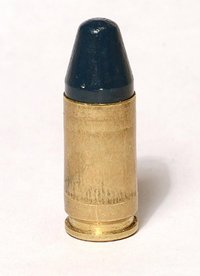I gave up on the Lee FCD a long time ago. I found that it was reducing the diameter of my loaded rounds to the point that the bullets were also reduced in diameter. Accuracy suffered. Precision, the MFR of the coated bullets I was using, strongly advises against the use of the FCD. As near as I can tell, the FCD is more of a cosmetic application, making the round look nice and smooth.
I am loading a lot of 9mm using Dillon dies in my 1050 with no problems except brass accumulation at the base of well used cases. This problem is difficult to deal with as most dies, including the Lee FCD, do not resize the lowest portion of the case. Without a specially modified die to remove this "belt" at the base of the case, such brass is useless.
PS Closely examining photo #1 of the bad round prior to its redemption at the hands of the Lee FCD, I see too much flare at the case mouth, i.e. not enough taper crimp. Dialing in a little more crimp with the Dillon die might have solved the problem.
Say I showed up at your house with a special case gage that was a slightly smaller version of yours. Then I took one of your bad rounds, forced it into my gage with a vise, popped it out with a dowel, handed it to you, and said, "Try it now".
If it fit your gage would you call it a success and shoot it anyway, or would you think, "No way! You just took a bad round and made it fit my gage without fixing it!"
It might sound preposterous, but it's exactly what you've been doing.
So, what do I go by? You are saying ( I think ) that because I'm using a lee die instead of the dillon die I am undersizing the brass to make it fit???
It was recommend that the case mouth / crimp on my 9mm reloads is .376. Is this NOT correct?

